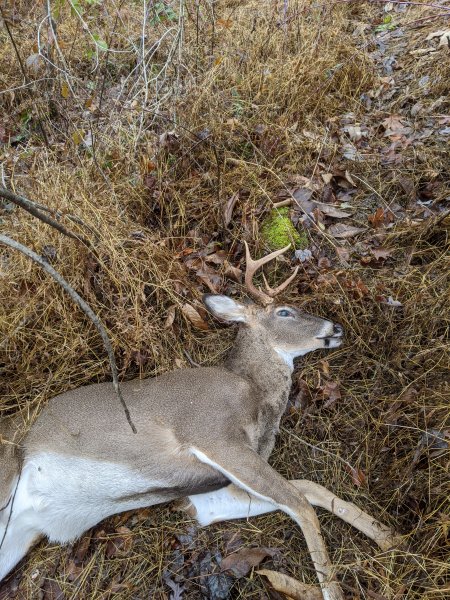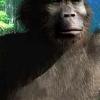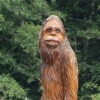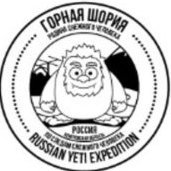Leaderboard
Popular Content
Showing content with the highest reputation on 12/22/2020 in all areas
-
2 points
-
They need to throw their cameras over the bank and buy a rifle.... And we can call it a success when a bloody corpse is on a lab table somewhere with lots of scientists surrounding it. Until then? It’s all noise. Including Isdahl and all the rest.2 points
-
In another thread, when chimpanzees/bonobos were mentioned, I asked if anybody was familiar with a bonobo DNA study. Eventually, Drew replied with this link: https://www.nature.com/articles/nature11128 I started reading the work, of course with sasquatchery in mind, and was literally blown away with similarities and possibilities. Consumed with life at the moment, I don't even have time to finish reading the work right now, but I believe it deserves its own thread here. To be resumed.........1 point
-
We all know that Chimps are *genetically* close to us, but I dunno, intelligence wise I think Orangs are our closest relative. They say give a Chimp, Gorilla and Orangutan a screwdriver. A Chimp will ponder for a min and play with it, a Gorilla will toss it, an Orangutan will escape his cage.1 point
-
The book is about the disappearance and ensuing search of Jacob Gray in Olympic National Park and Forest. Jacob went cycling into the park (by Sol Duc River) but his touring bike was found on the side of the road with no trace of him on April 6, 2017. The author follows the father’s agonizing search for his missing son while the father pursues all sorts of routes and potential clues. The author sprinkles the book with many other missing person cases from Michigan, Colorado, Idaho, Ontario, Hawaii, etc. Some of these people are found alive, others dead, and others are still missing. Nonetheless, he writes about these other cases to explain how search and rescue works in different parts of the USA and Canada and to introduce some of the experts in the SAR field and their techniques. If you want to read the book as a thriller and participate in the father’s search into the numerous places he went to and the eccentric people he met along the way, then don’t search for the case’s outcome in the internet. Knowing the ending, will spoil the intrigue on how a father and this family deals with the unknown and how far they are willing to go physically and mentally. I enjoyed the book. This is not a Missing 411 book with clusters and filtering of cases with particular attributes. It is refreshing to read a book about missing people that is not from Paulides. The book gives you a different perspective and contains interviews of experts in the SAR field with their opinion on this and other cases. While the author meets with David Paulides, quotes him several times, and gives him credit for bringing the missing persons in National Parks issue to the public’s attention, he does not support Paulides approach or suggested causes. Bigfoot and psychics are part of the book, as examples of what people claim, but the psychics do poorly. An interesting part of the book, for BFF members, is that Derek Randles and some of his Olympic Project members volunteered to help in the search for Jacob and let the father/family/friends stay at the “Bigfoot Barn” while they were searching. The “Bigfoot Barn” is the bigfoot research headquarters for the Olympic Project and is a property that Wally Hersom purchased to do bigfoot research in the Olympic peninsula. Kudos and great respect go to Derek and his team for giving time, energy, and the facilities to help the family find the missing son.1 point
-
It might be a good start to list the available foods that bears prefer? Variations in diet would be geographic as well as whatever would be seasonally available. Also, some databases already offer that kind of data. So in a sense, it's not like starting at square one when it comes to food sources because correlating reported food harvesting with seasons from a database may give someone a leg up? The main variable would be more about location. So, three factors at minimum: Time of year, food type, and location. I mean let's face it, we already have a lot of data in this regard so it would take creating at least a table of some kind to help put stuff together. Once we have that then I think it would be a good tool to use for at least seasonal research in a certain locale. These creatures consume a lot of material to maintain size, weight, and strength. Patterns should emerge for what they eat, when, and where.1 point
-
1 point
-
I'm one of those field-active members who hopes a body is never brought to the proverbial slab and would never contribute to that effort.1 point
-
They will not like it but you have to look at the motivations of nationally known BF researchers/ speakers on the lecture circuit. Many have not had an encounter. If they have it was decades ago. A room full of hundreds of people listening intently, who have paid to hear you, has to do something to people's egos. Some have some level of present field activity but mostly in the forms of fairly large groups, making it highly unlikely they would even have an encounter. A BF on a lab table would end the "are they real?" lecture curcuit for them and the desire to listen would be focused on people who can pull off a Dianne Fossey and observe BF in the wild and those with the body who can determine genetic ancestry. Real data determining if they are related to humans and knowing what they are talking about beats conjecture and supposition. . I suspect most on the present lecture circuit would prefer that BF existence is never proven. Meldrum probably has the most skin in the game because of what proof of existence would do to his professional reputation. While we have several field active forum members, most including myself, are not ready to prove existence. If I found a body tomorrow, I would likely lose possession and whatever proof I have gathered before that happened. There are too many government agencies involved with supression of the truth.1 point
-
That data would go a long way for any study of BF patterns. I am kicking around some ideas on next steps with using data sets for machine learning or "deep learning", which is not so easy. But oddly enough, people have time these days to work on it and bigfootery needs AI to perform tasks at lightning speed. It would take bigfooters years to scream through huge data sets and correlate patterns to discernable clues to study more in depth. ML-generated data will help bigfooters target their research areas with data points to pursue. Started brainstorming on that in the Olympic Project thread.1 point
-
Sorry BobbyO, outa plusses and thanks, at least for today. But I'll estimate when I'm back up and running that you'll have about 50 coming1 point
-
That would be correct RE the Cliff and Bobo podcast. I'd encourage people to listen to these three below episodes with Todd Hale which include some great recent vocalizations that have been backed up by extensive spectographic analysis that is also relayed within the episode that has David Ellis in, plus of course they are largely outlining what happened back in February with the new nest find and how that happened, only two weeks or so after i was out there with them. Episode 1 Episode 2 Episode 3 The site hasn't overly grown over by now neither.1 point
-
Here's Shane Corson giving an update on the **new** finds, they're incredibly cool, they truly are. Spend time listening to these Guys and Girls, trust me. Shane has recently given two interviews on what's happened in the last few months and if you don't know already, that's more nests, incredible print finds of both hands and feet and vocalizations that are amazing. Interview 1 - Shane is around the 02:05 mark or thereabouts, with new nest info from maybe 02:30 or so. Interview 21 point
This leaderboard is set to New York/GMT-05:00


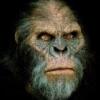




.jpg.b5c8420ce01458630cf89afd9b1fd29c.thumb.jpg.08a17e7147aee99ef1824b1f4b9a5c70.jpg)
